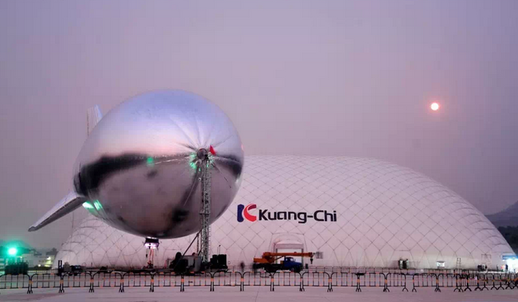A Chinese aerospace supplier is following the lead of American search engine company Google by preparing to test a WiFi transmission system that relies on high-altitude balloons to reach remote areas.
中國航空供應商效仿美國搜索引擎谷歌公司測試WIFI覆蓋面,并通過氣球將信號覆蓋到偏遠地區。
Shenzhen-based Kuang-Chi Science Ltd. plans to test the balloons in the skies above New Zealand before July, some two years after Google’s Project Loon sent 30 balloons sailing into the stratosphere over that country as part of a WiFi service experiment.
深圳光啟研究院計劃在7月之前將氣球送上天,兩年前同樣在新西蘭,谷歌氣球項目“Project Loon”將30個氣球發送到平流層。并進行了WIFI信號實驗。
Kuang-Chi has already stationed a team in New Zealand to prepare for the launch of the Traveler balloon, said Xu Yuqin, a company manager.
光啟科學經理許毓欽稱,公司已經在新西蘭組建團隊,為“旅行者號”的發射進行準備。

Kuang-Chi’s helium balloon is 40 meters in diameter, and will float up to 100 kilometers above sea level, above the flight routes used by commercial airlines. It will relay WiFi signals to mobile phones and computers, circumventing standard, ground-based wireless services offered by telecom companies.
光啟的氦氣氣球直徑為40米,升空高度將超過客機的飛行高度,達到100千米。不同于電信公司向手機和電腦提供地面無線信號,信號將從氣球中發射。
Kuang-Chi is also developing a balloon network for providing Internet services to support mining, disaster relief and forest protection in the Democratic Republic of the Congo.
光啟科學正在剛果研發氣球聯動系統,從而為采礦業、賑災以及森林保護提供網絡服務。
Xu said the company is discussing similar potential agreements with the governments of Uzbekistan and South Africa.
許稱公司正在與烏茲別克斯坦,南非談論合作可能。
For Caixin Online, this is Roma Eisenstark
這是羅姆·艾森施塔克為您帶來的財新新聞報道。
譯文屬可可英語原創,未經允許,不得轉載。











